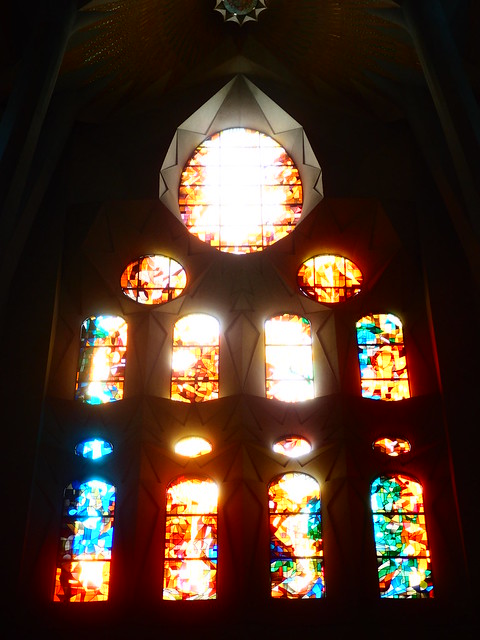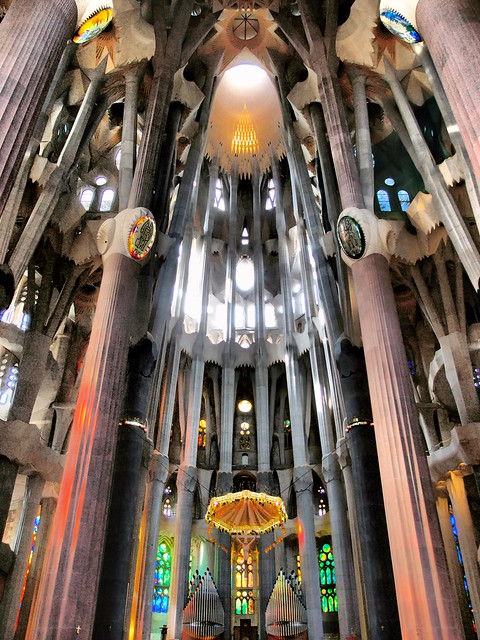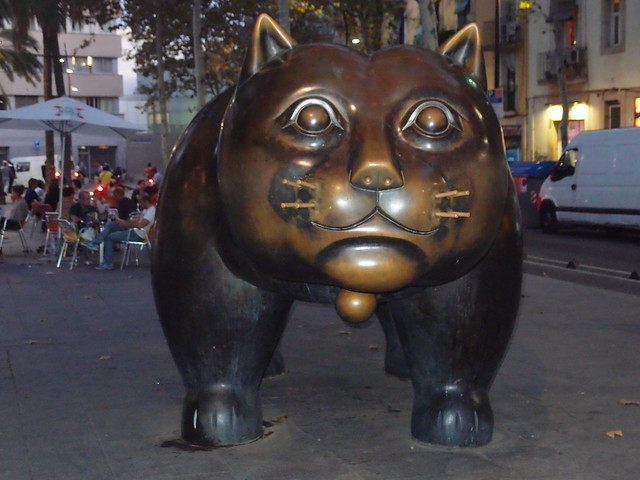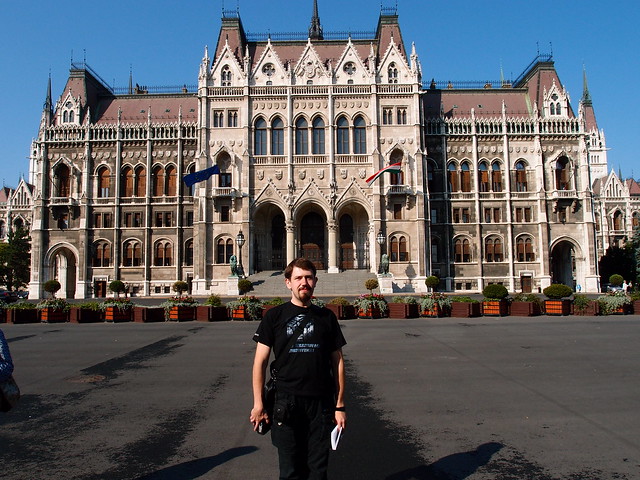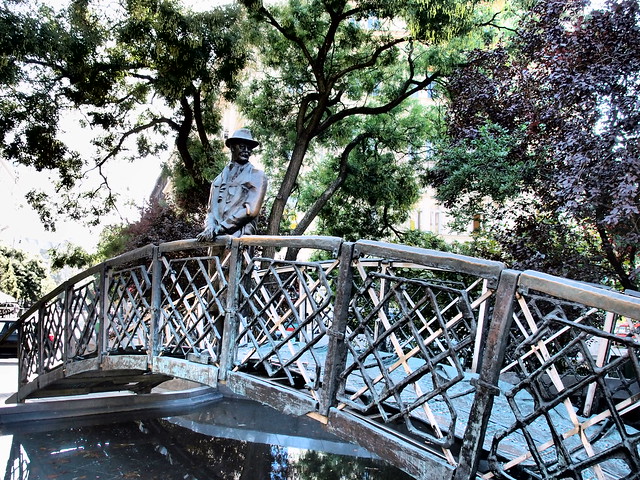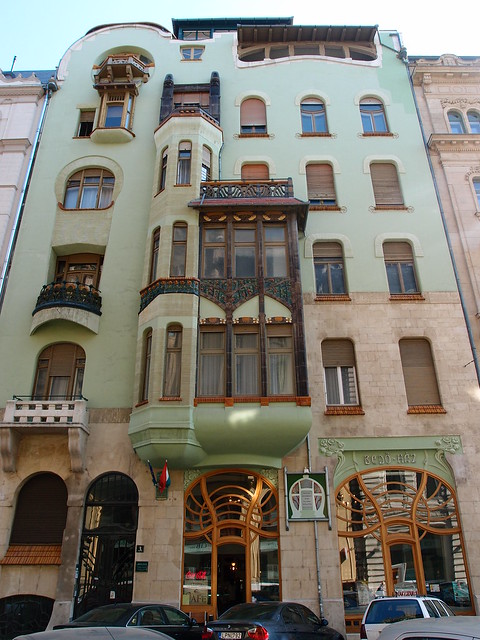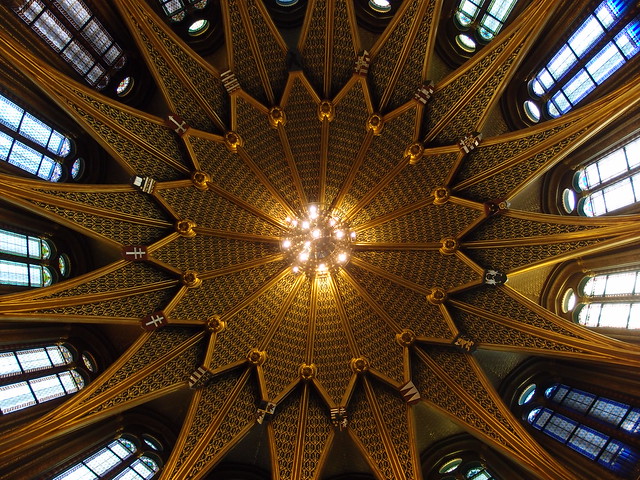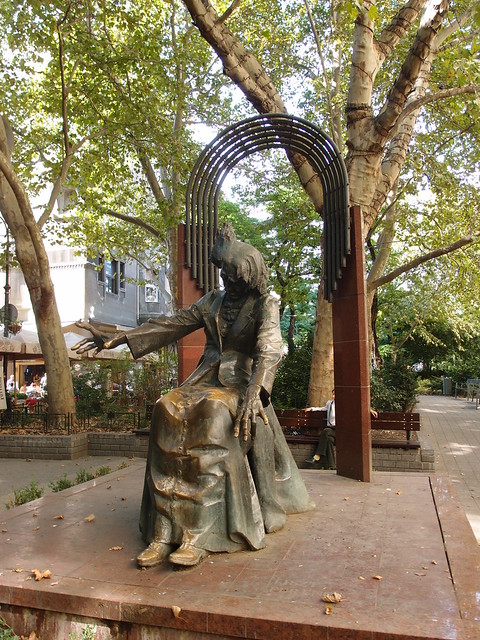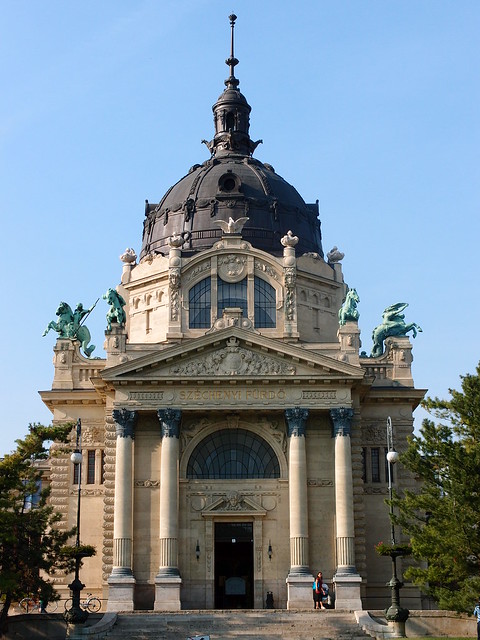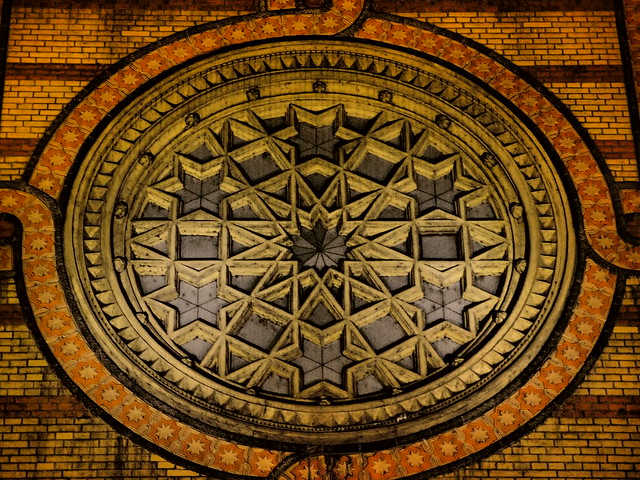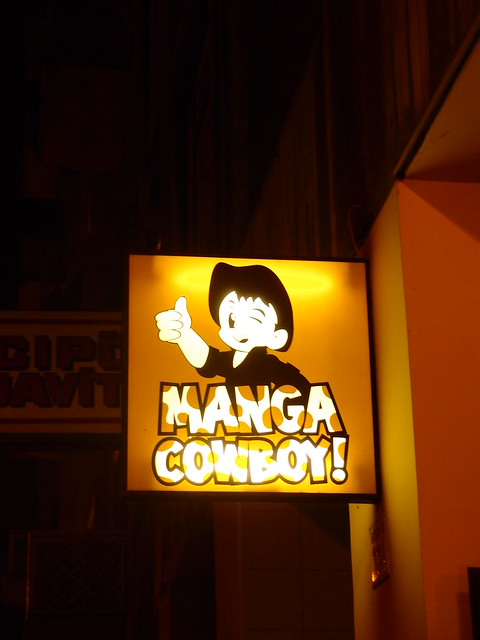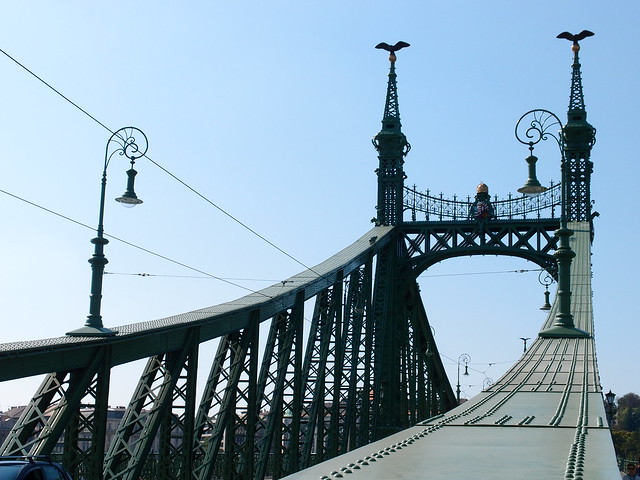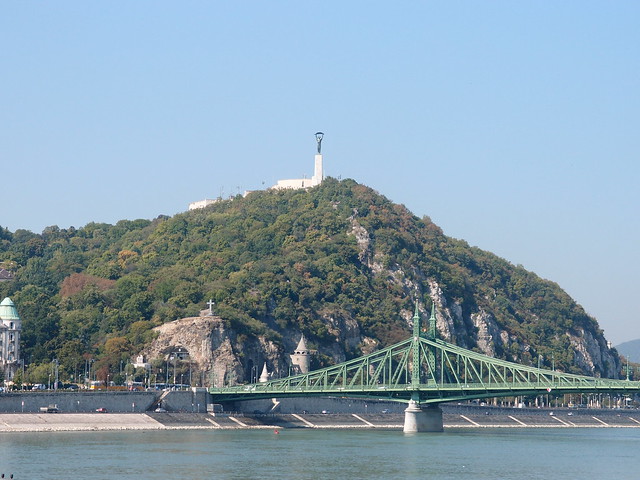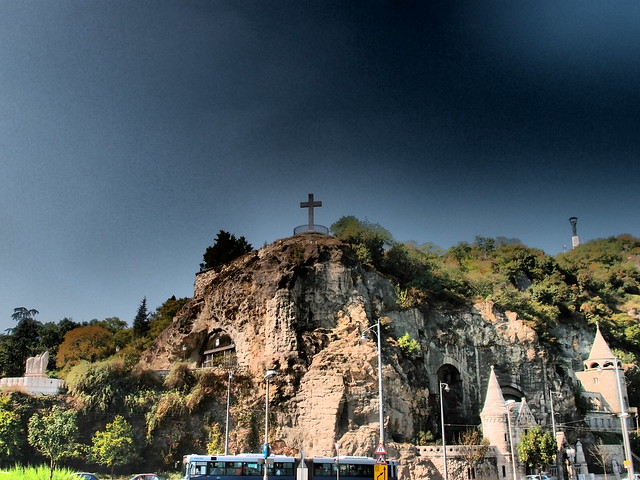The trick to having an adventure is to rush into it.
This adventure did not begin with the shot of a starting
pistol, and it did not begin with me telling anyone “well, I’m off”. It began
with another, smaller adventure – two days volunteering for a youth culture
festival, while a friend from abroad visited. On the Saturday, after the day’s
event schedule was done, I took Tom to Tartu’s most popular student bar for the
open mic night of our comedy circuit. After my set, fueled by the performer’s
free gin and tonics, we went back to the festival afterparty where I’d promised
to help run the drinks station, and stopped over for a greasy late-night burger
on the way. The club was full of young people who came there to be weird. Tom
enjoyed the night a lot. I enjoyed it a whole lot more. The party ran out of alcohol
that night.
The second day is something of a haze; I know that I did not
take Tom out drinking on Sunday night. We were on the early morning bus to
Tallinn, first thing on Monday morning, and I still needed to pack. And sleep.

Tom’s flight back to London was not until later in the day,
so I texted him that it wasn’t a big deal for him to wake up for the 7am bus,
but he made it anyway. I was catching the fast ferry across the bay a couple of
hours after him, but before that, I had a business meeting in an office park
far from central Tallinn. I was carrying my bags, with all the stuff I’d need
for the next month, across many time zones, climates and terrains; and to my
dismay, there were no left-luggage lockers anywhere in the center of town. I
ended up installing Tom in a WiFi-enabled coffee shop, where he happily drank
those sugary, creamy, vaguely coffee-based beverages that he’s come to love for
their sheer New Europe un-self-consciousness (a welcome change from socially
obsessive London), while I took the electric bus out to Kadaka. The meeting did
not result in anything useful, other than experience; they might have wanted to
talk to me again, but I would be unavailable for an entire month.
The adventure was, in this form, an accident. I’d
accumulated enough vacation time to have a proper big one; the original idea
was to see the Far East. I’d been to Hong Kong and Singapore before, and found
them quite fascinating. In the spring of 2011, I was going to fly to Seoul,
spend two weeks in Korea (including a few days with an acquaintance in Busan),
then take the ferry over to Japan for two weeks there. Not long before my trip,
the tsunami and Fukushima disaster happened. I almost still went, but it did
not seem to be a good time to visit Japan. Those events would give me an
important experience later – but that’s not part of this story.

As my travel insurance paid off, I had both the spare time
and the spare cash to jump onto a good offer when I saw one. I did not
originally intend to go back to the US – I’d been there two years before, close
to two weeks spent in NYC and then staying with a friend near Washington D.C. Since
I’d been in California before that, for an entire month, back in the summer of
2003 (and on my employer’s dime), America was not my first choice; but then there
came an offer I could not refuse. American Airlines was starting a new direct
route to Budapest, and was offering an incredible deal: several destinations in
the US, plus three whole destinations on their alliance partner’s network in
Europe, all on the same ticket. It was only available for a single day, until
Malev, the Hungarian national carrier, woke up to what AA was actually asking
of them, and for how much money; but I acted fast enough to secure a huge round
trip for a mere 530 euros. Helsinki to Budapest (where I hadn’t been before) to
Barcelona (which I’d wanted to visit again) back to Budapest, to NYC (never
dull) to Los Angeles (which I’d only ever briefly driven through); and back
from Seattle (removed enough for an adventure), connecting through NYC and back
to Budapest, then to Helsinki again. I’d be paying a bit more for the ferries
and other travel arrangements, but it was still an amazing deal.
The most expensive and difficult part would be getting from
LA to Seattle via all the places I’d wanted to visit. I really wanted to use
trains as much as I could, but even on the West Coast, which is heavily
populated in the south and very civically minded in the north, the Amtrak
service appeared to be abysmal. I didn’t fancy the Greyhound buses, so I
convinced myself that it was worth renting a car.
I came back to central Tallinn and found Tom in good
spirits, even more so when I showed him the Depeche Mode bar (closed on a
Monday morning, unfortunately – but he’d come back for it, and bring his
DM-loving friends). Between the aggravation of carting around my bags on public
transport, and the potential cost of cabs, this was actually the perfect use
case for the Minirent service, which had started up in Tallinn just before
then. I could have picked up a bright-green Prius at the bus station, left my
bags in it for the meeting at Mustamäe, dropped my friend off at the airport, then driven to the ferry
terminal and left it there, and it would not have been that expensive. But I
was about to spend a lot of money on more than just convenience. I was going to
have an experience.

The hydrofoil took me across the first (theoretical) border;
from a sunny, crisp late-September afternoon in Tallinn, to an absolutely dreary
evening in Helsinki. For me, that city has always been a source of
disappointment (for both architectural and personal reasons) and a sense of
urban discomfort and uselessness that I’d rarely felt before outside of
Brussels. Never mind; I was only here because my flight was early in the
morning. I’d originally been meant to take the double-espresso pondhopper from
Tallinn to Helsinki-Vantaa, but in the meantime, Finncom Airlines had decided
it didn’t feel like flying to Estonia anymore; so there wasn’t an early bird
option. I’d have to spend the night in a Helsinki hotel, and just to get some
use out of those 26 euros, I had talked my way into a guest spot at a comedy
show.
Not that it was anything fancy. I’d done a regular comedy
club in Helsinki before, and done well; but what was available on that night
was the locals’ new material/open mic night. Where Comedy Estonia had the
benefit of novelty and a supportive enthusiastic fan base, in Helsinki there
was nothing new or exciting about standup, not even in English. So the show,
despite featuring some big local names, was in one half of a glass-fronted coffee
shop in an alley just off a strip mall on Mannerheim Road. It certainly had the
benefit of being as central as Helsinki gets, but nobody in the bar was there
to see comedy; they were just there to get drunk on a Monday night. I don’t
remember much of my five-minute set, but I do remember getting the stone-faced
crowd to smirk at least a couple of times, and on the night, I considered that
a win. I also remember taking the piss out of the big-name local: “I’ve been
told that Tomi Walamies’s face has
recently appeared on a bus… I thought Tomi’s face was a bus!” You may understand why I don’t do standup any more.
I stayed in the bar, surfing on their WiFi until I ran out
of drinks tickets that the promoter was handing out to the performers (more
than fair, since nobody in the audience had actually paid to get in) – I was
the only one with nothing better to do on a Monday night than to load up on
Lapin Kulta – and went back to the scandalously over-priced hostel for my alarm
to wake me up just in time for the first coach to Vantaa.




